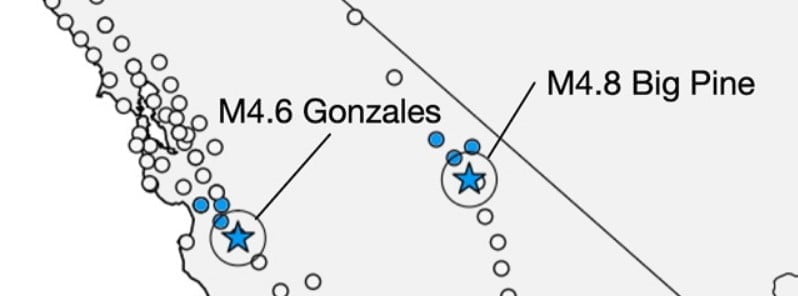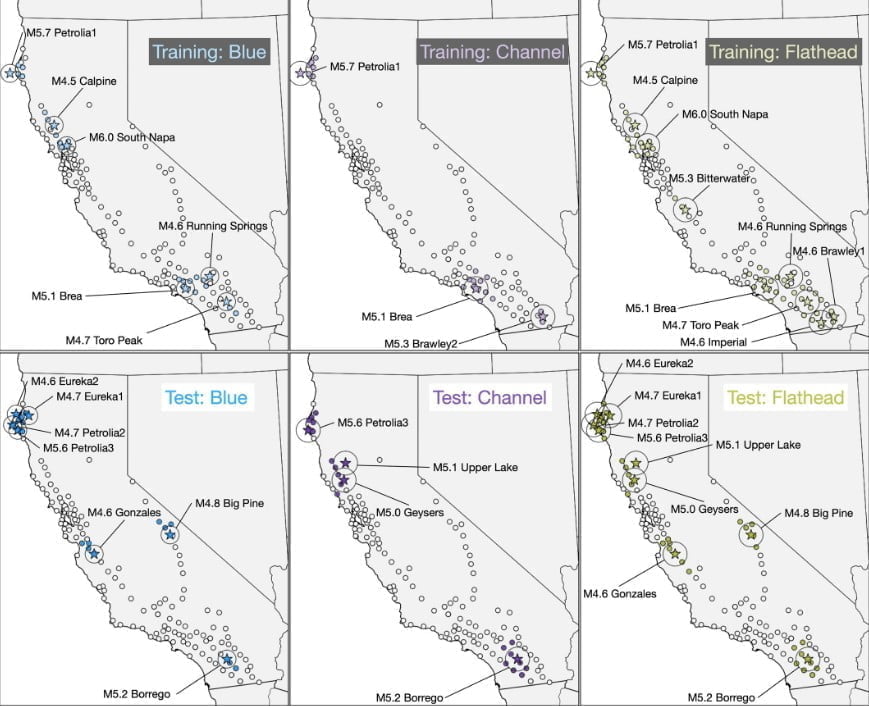Study provides evidence of physical change that can be observed in the days before an earthquake

Researchers reporting in AGU’s JGR Solid Earth identified changes in the magnetic field near intermediate-large earthquakes in California in the days before the earthquakes happened, providing evidence that there is a physical change that can be observed in the days before an earthquake.
- Magnetic field changes as earthquake precursors have been the subject of numerous studies and some controversy
- The statistical signal presented in the study is of modest size, which means that researchers still can’t directly provide a prediction that can be used to alert the public
- This study provides evidence that there is a physical change that can be observed in the days before an earthquake, but further scientific study is needed to understand this process
The authors present an analysis of ground-based magnetic time-series measurements before 19 earthquakes ≥M4.5 in California drawing from over 330 000 site-days of measurement spanning a decade.
To perform a fair existential test for electromagnetic antecedents they applied a pre-specified statistical analysis with two key ideas.
First, the researchers combined signals from nearby (≤40 km) sites via spectral cross-power, and then looked for large spikes in the frequency domain (0.016–25 Hz).

“In this statistical case-control study, we used the machine learning concept of rigorously separated train and test sets of earthquakes which were generated via a rule-based query of the USGS earthquake catalog.
“Before each declustered earthquake, we constructed one period 24–72 hr before (the “precursor” or “p-period”) and a series of seven equally-sized preceding periods (“quiescent” or “q-periods”).
“We distilled the data in each period to a frequency-dependent feature—the 98th percentile of spectral cross power.”
They trained a model based on Linear Discriminant Analysis and applied the discriminator to the test set revealing a modest effect in the days leading up to an earthquake.
While the observed effect size is not directly useful for earthquake prediction (long a scientific goal), it suggests a relationship that should be further investigated for a physical link.
This study should enable further principled examinations of geomagnetic precursor signals and serve as a model for a sound statistical analysis process in this very challenging domain for data-driven science.
“We hope that these observations may ultimately contribute constructively to the literature on understanding processes that lead up to earthquakes.”
Reference:
“Case-Control Study on a Decade of Ground-Based Magnetometers in California Reveals Modest Signal 24–72 hr Prior to Earthquakes” – AGU JGR Solid Earth – https://doi.org/10.1029/2022JB024109 – OPEN ACCESS
Featured image: Map of site locations and earthquakes considered in this study. Credit: AGU JGR Solid Earth

Commenting rules and guidelines
We value the thoughts and opinions of our readers and welcome healthy discussions on our website. In order to maintain a respectful and positive community, we ask that all commenters follow these rules.